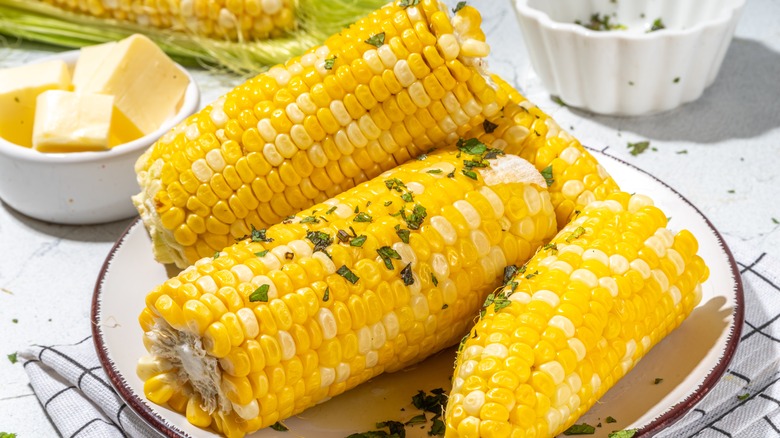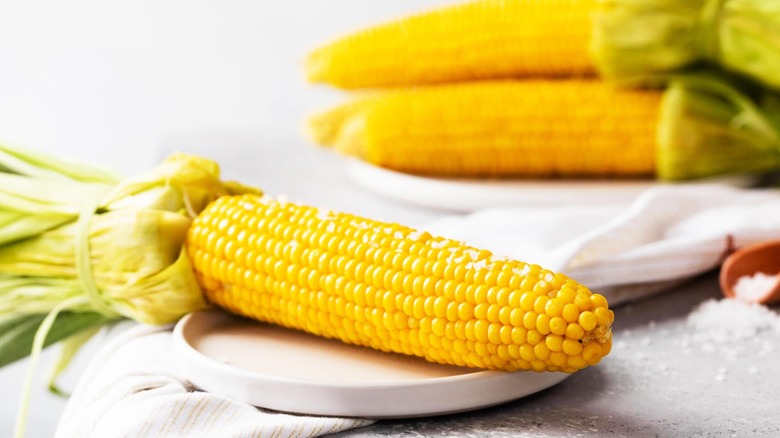The Water Mistake You're Making That Causes Soggy Corn On The Cob
Corn on the cob is simultaneously the easiest and most difficult of foods to prepare. While the process is relatively straightforward — toss ears into a pot of boiling water — there are a few things that can go wrong. From improperly prepping corn to boiling it for too long, these minor mishaps can significantly impede quality. Yet, even if cobs are cooked correctly, you might still be sacrificing plumper textures and bolder tastes based on how you cool the corn.
It doesn't take long to cook corn on the cob. The part that seems to take forever is waiting for it to cool. Though it may be tempting to accelerate the process by running hot cobs under cold running water, it's best that you don't. Similar to leaving boiled corn in its cooking liquid for too long, rinsing steamy cobs causes the kernels to absorb more water. As a result, waterlogged kernels take on a soft and soggy texture that's anything but pleasantly crunchy. Not to mention that flavor can also suffer since waterlogging can rid corn of its natural earthy sweetness (and any seasoning!), rendering them totally bland.
The ideal solution? Let corn on the cob cool the old fashioned way. After boiling, add ears to a platter and let them rest for several (albeit painstaking) minutes until they're no longer piping hot. For an accelerated alternative, you can even prop the platter by a breezy windowsill or fan so that you can get to enjoying corn faster.
How to make the crispest and crunchiest cobs of corn
Crisp corn kernels are only a guarantee when ears are at their freshest, which is why we recommend buying corn seasonally from a farmer's market. As a rule of thumb, the ripest corn will be tightly wrapped in moist, jade-colored husks with pearly silk strands. Unless you're cooking them immediately, store corn somewhere cool to ensure it doesn't become starchy and, therefore, mushy. Likewise, keeping corn in its husk can maintain its moisture, again reducing the risk of limp kernels.
Working with quality corn is key, but knowing how to properly cook it is equally important. For the juiciest, plumpest, and sweetest result, timing is everything. Despite that fresh ears boil in less time than older ears, the process should still take mere minutes in order to mitigate tough textures. After kernels swell slightly and turn golden, cobs must be pulled from bubbling water — which can be seasoned with a stick of butter or splash of milk for richness, but not salt as it decreases tenderness — and set aside to cool as a means of preventing soggy textures.
Interestingly, there is one exception to cooling corn. If your intention is to freeze corn, an ice bath can be a speedy way to chill cobs and lock in flavor. Otherwise, it always pays to be patient and let ears cool naturally for the crispest and tastiest corn on the cob; saving yourself from flavorless, waterlogged corn really is that simple.

